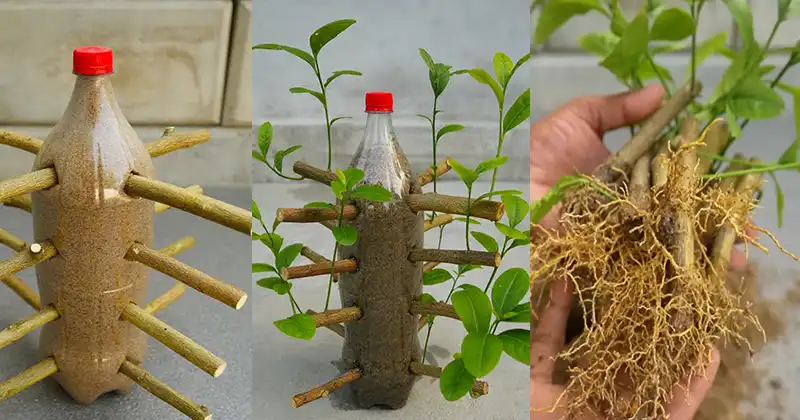Lemon trees are a delightful addition to any garden, and what’s even better is that you can easily propagate them from cuttings! If you’re looking for an easy and unique technique, look no further. In this article, we’ll guide you through a special method that only requires a 2-liter plastic bottle and a few simple steps. Say goodbye to complicated gardening processes and hello to straightforward and effective lemon tree propagation.
What You’ll Need
To get started, gather the following materials:
- A 2-liter plastic bottle
- Sand or a well-draining potting mix
- Lemon tree cuttings (6-8 inches long)
- Rooting hormone (optional)
- A sharp knife or scissors
- Rubber bands or twine
- A misting bottle or spray bottle
Let’s Get Started
Follow these easy steps to propagate your lemon trees:
Step 1: Prepare the Cuttings
Begin by selecting healthy lemon tree cuttings. Make sure they are around 6-8 inches in length and have nodes. If you want to give them an extra boost, you can use rooting hormone to encourage root development.

Step 2: Create Plus Sign Openings
Take the 2-liter plastic bottle and make “plus sign” openings on each side. These openings should be large enough to accommodate your lemon tree cuttings without them falling out.
Step 3: Insert the Cuttings
Gently insert the lemon tree cuttings into the “plus sign” openings you created. Make sure they are secure within the bottle.
Step 4: Enclose and Maintain
Cover the top of the bottle with plastic wrap or a plastic bag and secure it with rubber bands or twine. This will create a greenhouse effect and help maintain humidity around the cuttings. Find a well-lit area with indirect sunlight and place the bottle there.
Step 5: Keep it Moist
Consistently keeping the cuttings and the interior of the bottle moist is essential. Use a misting bottle or spray bottle to regularly mist the cuttings. This will create the ideal conditions for root development.
Step 6: Monitor Growth
Over time, keep an eye on the cuttings for root development. Gently tug on them to check for resistance, which indicates that roots have formed.
Step 7: Transplant
Once the cuttings have successfully rooted and developed, it’s time to transplant them. You can either place them into individual pots or directly into the garden, where they will grow into robust lemon trees.
By following this unique technique, you’ll enjoy the satisfaction of growing your own lemon trees from cuttings with minimal hassle. Remember, it may take several weeks to see significant progress, so patience is key. But trust us, the results will be well worth the effort. Get ready to experience the joy of lemon tree propagation!





